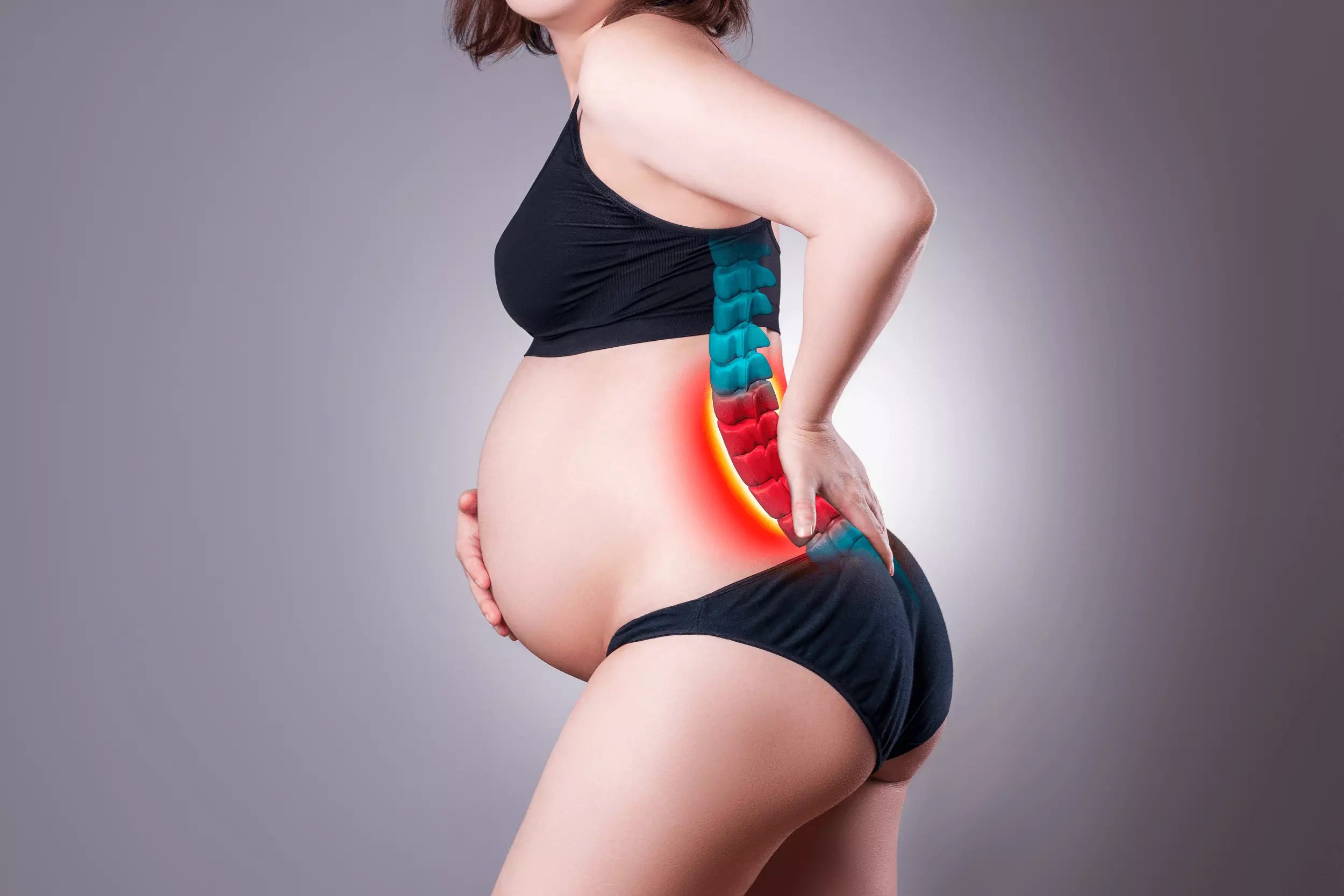Sciatic pain is very common during pregnancy. Physical and physiological changes frequently alter the position of various structures and can even put excessive strain on certain muscle groups.
Sciatica primarily affects the spine, hips, and buttocks, making it a more common disease during pregnancy. This is because they compress as the fetus grows.
Here are some tips on how to deal with these common aches and pains in pregnancy.
What Is Sciatica?
The sciatic nerve starts in the lower back and travels down the back of each leg to your feet, through your hips and buttocks. Sciatica refers to the pain and sensations felt along the path of the sciatic nerve. Usually, the disease affects only one side of your body. The good news is that most cases of sciatica can be treated at home and resolved within a few weeks.
Causes of sciatica during pregnancy
Herniated discs are the most common cause of sciatica in the general population, however, sciatica caused by a herniated disc is rare during pregnancy, affecting only about 1% of pregnant women. However, there are other factors quite common during pregnancy that can compress the sciatic nerve. The sciatic nerve can be irritated by loose ligaments, general swelling of the body, and a growing baby’s position in the pelvis. Between 50 and 80% of pregnant women experience sciatica discomfort in the lower back.
Symptoms of sciatica during pregnancy
Sciatica should be distinguished from pregnancy symptoms more typical of lower back and pelvic girdle discomfort (also known as pubic symphysis dysfunction), which affects two-thirds and one-fifth of pregnant women, respectively.
Sciatica pain can affect the lower leg, back of the leg, foot, and toes as it travels along the path of the sciatic nerve. In some places, you may experience a shooting, searing, or stabbing pain, tingling, numbness, or weakness, which may get worse when you move, cough, or sneeze. Sitting for an extended period can also make your symptoms worse.
Back pain is possible, but the sensations in the buttocks, legs or feet are usually more painful. It is also common to experience a mixture of symptoms, such as pain in one area of the leg and a tingling or numb sensation in another.
Ways to relieve sciatica pain during pregnancy
You are not alone if you experience sciatica pain during pregnancy. Pregnancy and sciatica go hand in hand. About two-thirds of all pregnant women suffer from sciatica.
Once you’ve determined that you have sciatica, there are several pain relief methods you can try. Stretching, light exercises and massages are some simple treatments for sciatica.
These stretches are safe for sciatica during pregnancy
- Seated Piriformis Stretch: Lift your left leg to place your foot on the opposite knee while sitting in a chair. Slowly lean forward until your lower back and buttocks are stretched. Switch to your right leg after 30 seconds of maintaining this stretch.
- Child’s pose: Kneel on the floor and spread your knees, touching your big toes together. Lean forward and step forward with your palms flat on the floor until you are completely lying on the floor. Breathe in deeply until you feel your backstretch, then slowly return to a sitting position.
- Standing Hamstring Stretch: Place your feet flat on the floor and stop. Lift your left leg and place your heel on a stable surface so that your leg is straight in front of you and your toes point upward. Lean forward and hold for 30 seconds to stretch your hamstrings. Repeat with the other leg.
- Kneeling Lunge: Kneel on the floor and lift your left leg until it is parallel to the floor. Stretch your hip and thigh, gently shifting your body weight forward. Switch to the right leg after 30 seconds of holding.
- Walking
- Swimming
- Yoga
- Stationary cycling
After consulting with your doctor, try these light exercises for sciatica pain relief during pregnancy:
Before engaging in any type of activity during pregnancy, consult your doctor. Because every pregnancy is unique, your doctor may advise you to avoid specific foods for your health. Swimming is particularly beneficial because the water makes your body more buoyant, reducing strain and pressure on your joints and bones while you exercise.
Bottom Line
Sciatica discomfort is very common during pregnancy. The pain can strike at any time and ranges from bothersome to disabling.
Take the time each day to calm your body down, whether it’s with a hot bath or one of the other solutions offered for sciatica pain during pregnancy. Pressure on the sciatic nerve causes sciatica pain, so take some time to relax and relieve the pressure.


